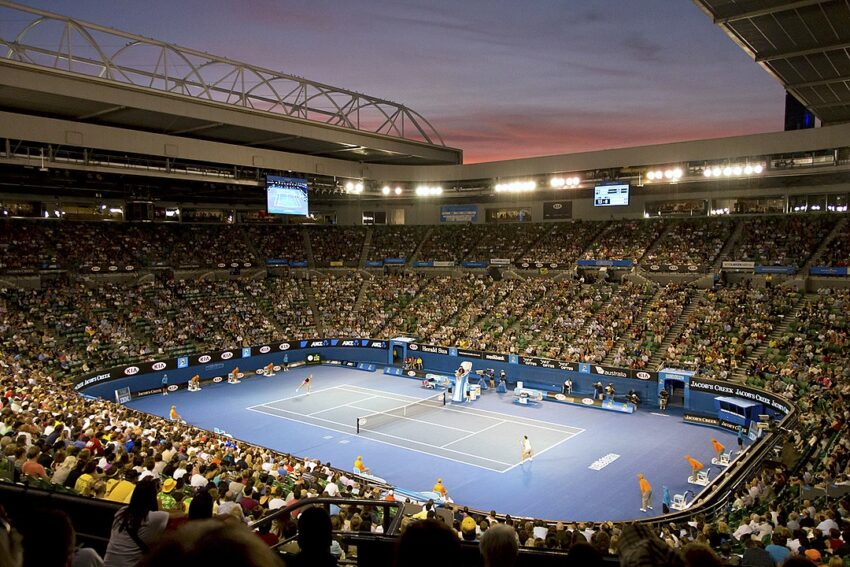Tennis
The Davis Cup story: From challenge to global event
The Davis Cup is currently the most watched event of the national tennis teams. The history of this tournament dates back to the 19th century and has itself gone through a very interesting evolution.

The Davis Cup is currently the most watched event of the national tennis teams. The history of this tournament dates back to the 19th century and has itself gone through a very interesting evolution.
The idea of the USA and Great Britain playing each other
The history of the Davis Cup dates back to the late 19th century, specifically to 1899, when student Dwight F. Davis came up with the idea of a reciprocal duel between the US and Great Britain teams. He purchased the travelling cup at his own expense and drew up the playing scheme. The cup for the competition was a gold-plated silver salad bowl, now known as the “salad bowl”.
Davis’ intention was to establish a tennis competition for all members of the International Tennis Federation. The first ever tournament was held in 1900, with Davis himself playing for the United States team, which won 3-0. Even back then, the format was played with two opening singles matches, continuing with doubles, and then two more singles matches at the end. This format has been maintained to this day.
In the very next edition, in 1902, an impressive attendance of ten thousand spectators came to the tournament. The first British triumph dates back to 1903, when Great Britain defeated the USA 4-1 in the match. It was also the last edition in which only two teams participated.
The format of the Challenge Final
Since 1904, multiple selections have participated in the Davis Cup. In connection with this, the format of the tournament also had to be modified, with the new winner of the previous edition playing the final on its own soil. The format used was that the winner of the tournament would challenge the defending champion from the previous year, and in the final the two teams would face off for the overall triumph.
Great Britain’s triumph in 1903 thus attracted more teams to the tournament, as it eliminated the complicated and costly travel between continents. France and Belgium were newly entered, while the USA took a year off from the tournament.
An interesting feature of the Davis Cup’s early days was the Australasia team, a composite selection of Australia and New Zealand, which operated until 1923. This team did well, dominating the tournament for the first time in 1907 and even going unchallenged in 1910.
The popularity of the competition attracted new teams
No edition was held during the war conflict. However, immediately after the end of the war, the popularity of the tournament grew. While in 1920 six countries entered the tournament, a year later there were eleven, including the debuting Czechoslovakia. In 1928, 33 teams participated.
The most frequently triumphant teams up to World War II were the US, Great Britain, France and Australia (formerly Australasia). The next war conflict interrupted the tournament again, but it was restarted in 1946.
The competition was discontinued after the death of Dwight F. Davis officially renamed the Davis Cup in 1945. From 1946 until 1973, the tournament never knew a winner other than Australia or the United States
Abolition of the Challenge Finals
In 1972, the Davis Cup was hit by a major rule change when the challenge final system was abolished and the winner became a rank-and-file participant in the next edition. The overall winner was now decided by an intercontinental final.
This change in the rules led to a new composition of the final pairs. In 1980, the Davis Cup was won for the first time by Czechoslovakia, who defeated Italy 4-1 on home soil. It was also the last year before the tournament format was changed again.
Due to the large number of participants, the tournament was now held in performance classes. There were 16 teams in the elite group who competed against each other in a spider-like fashion for the overall triumph. The four worst teams were then relegated to a lower class.
The modern era
In the modern era, the Czech Republic enjoyed the title in 2012 and 2013. At the same time, the Czech Republic is the country that has the most consecutive participation in the elite world group of all countries. Between 1981 and 2005, it collected a total of 25 participations.
The latest reform of the tournament rules took place in 2018, when the format of a one-week final tournament with 18 participants was introduced from the following year. The tournament is then held in groups of three, with the top eight advancing to the quarterfinals. The rest of the tournament is played in the classic knockout system.
Source: Tenisportal, Livesport








